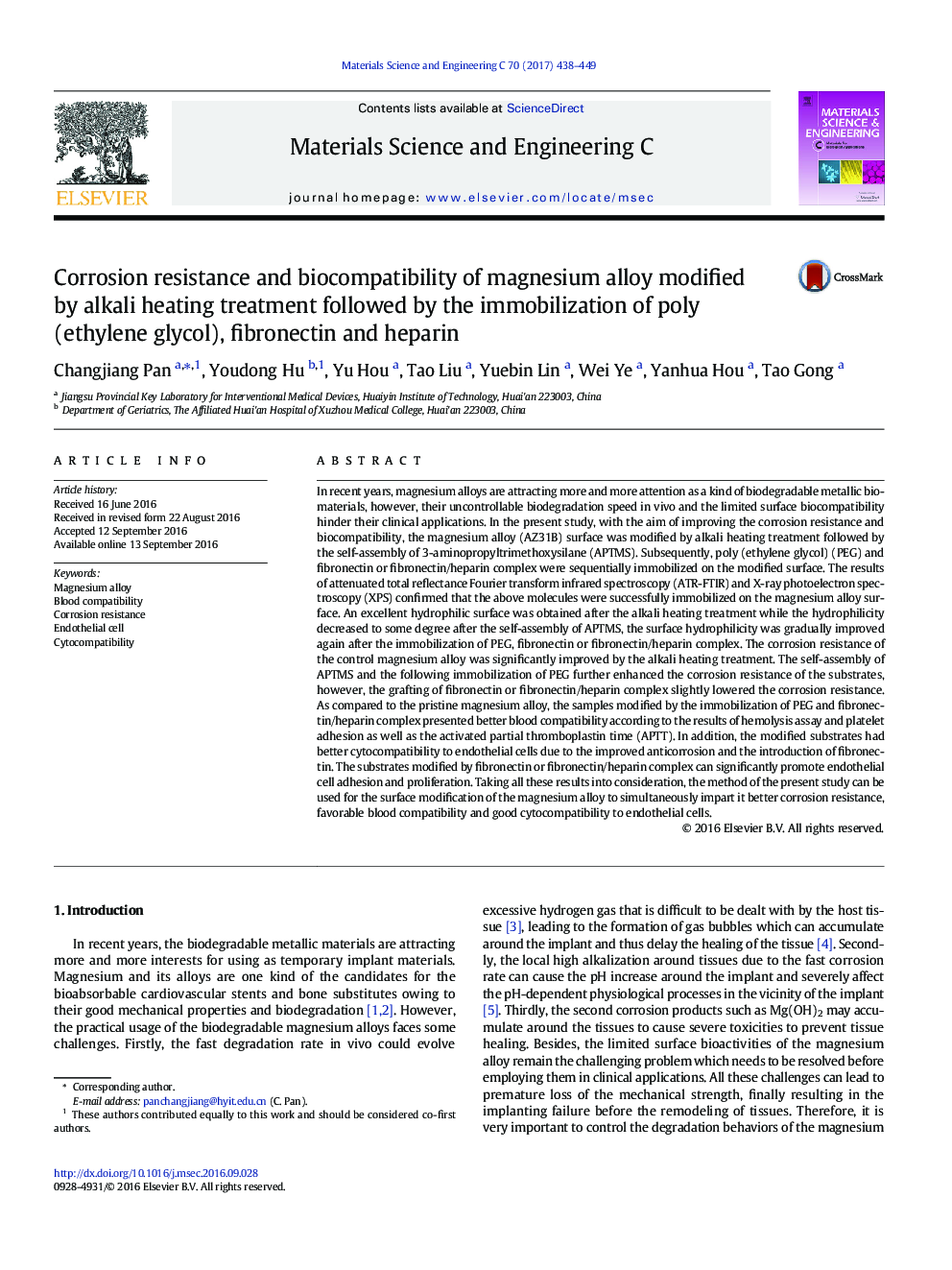| کد مقاله | کد نشریه | سال انتشار | مقاله انگلیسی | نسخه تمام متن |
|---|---|---|---|---|
| 6481385 | 1398100 | 2017 | 12 صفحه PDF | دانلود رایگان |
- The magnesium alloy surface was successfully functionalized with biomolecules.
- The resulting modified surface exhibited excellent hydrophilicity and improved anticorrosion.
- The hemocompatibility and cytocompatibility of magnesium were enhanced after surface modification.
- The method can be used to control the biodegradation behaviors of magnesium alloy and to improve its biocompatibility.
In recent years, magnesium alloys are attracting more and more attention as a kind of biodegradable metallic biomaterials, however, their uncontrollable biodegradation speed in vivo and the limited surface biocompatibility hinder their clinical applications. In the present study, with the aim of improving the corrosion resistance and biocompatibility, the magnesium alloy (AZ31B) surface was modified by alkali heating treatment followed by the self-assembly of 3-aminopropyltrimethoxysilane (APTMS). Subsequently, poly (ethylene glycol) (PEG) and fibronectin or fibronectin/heparin complex were sequentially immobilized on the modified surface. The results of attenuated total reflectance Fourier transform infrared spectroscopy (ATR-FTIR) and X-ray photoelectron spectroscopy (XPS) confirmed that the above molecules were successfully immobilized on the magnesium alloy surface. An excellent hydrophilic surface was obtained after the alkali heating treatment while the hydrophilicity decreased to some degree after the self-assembly of APTMS, the surface hydrophilicity was gradually improved again after the immobilization of PEG, fibronectin or fibronectin/heparin complex. The corrosion resistance of the control magnesium alloy was significantly improved by the alkali heating treatment. The self-assembly of APTMS and the following immobilization of PEG further enhanced the corrosion resistance of the substrates, however, the grafting of fibronectin or fibronectin/heparin complex slightly lowered the corrosion resistance. As compared to the pristine magnesium alloy, the samples modified by the immobilization of PEG and fibronectin/heparin complex presented better blood compatibility according to the results of hemolysis assay and platelet adhesion as well as the activated partial thromboplastin time (APTT). In addition, the modified substrates had better cytocompatibility to endothelial cells due to the improved anticorrosion and the introduction of fibronectin. The substrates modified by fibronectin or fibronectin/heparin complex can significantly promote endothelial cell adhesion and proliferation. Taking all these results into consideration, the method of the present study can be used for the surface modification of the magnesium alloy to simultaneously impart it better corrosion resistance, favorable blood compatibility and good cytocompatibility to endothelial cells.
Journal: Materials Science and Engineering: C - Volume 70, Part 1, 1 January 2017, Pages 438-449
